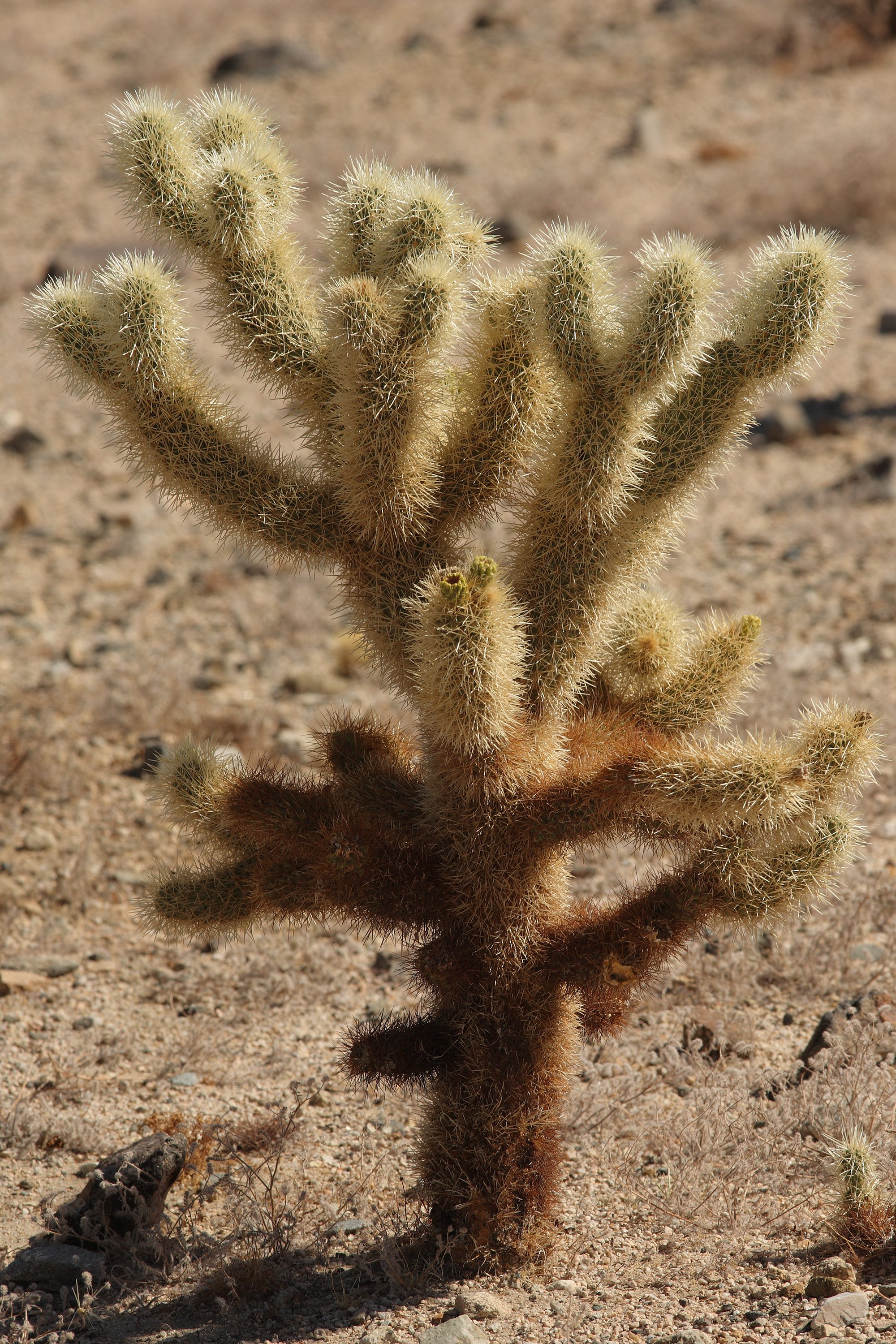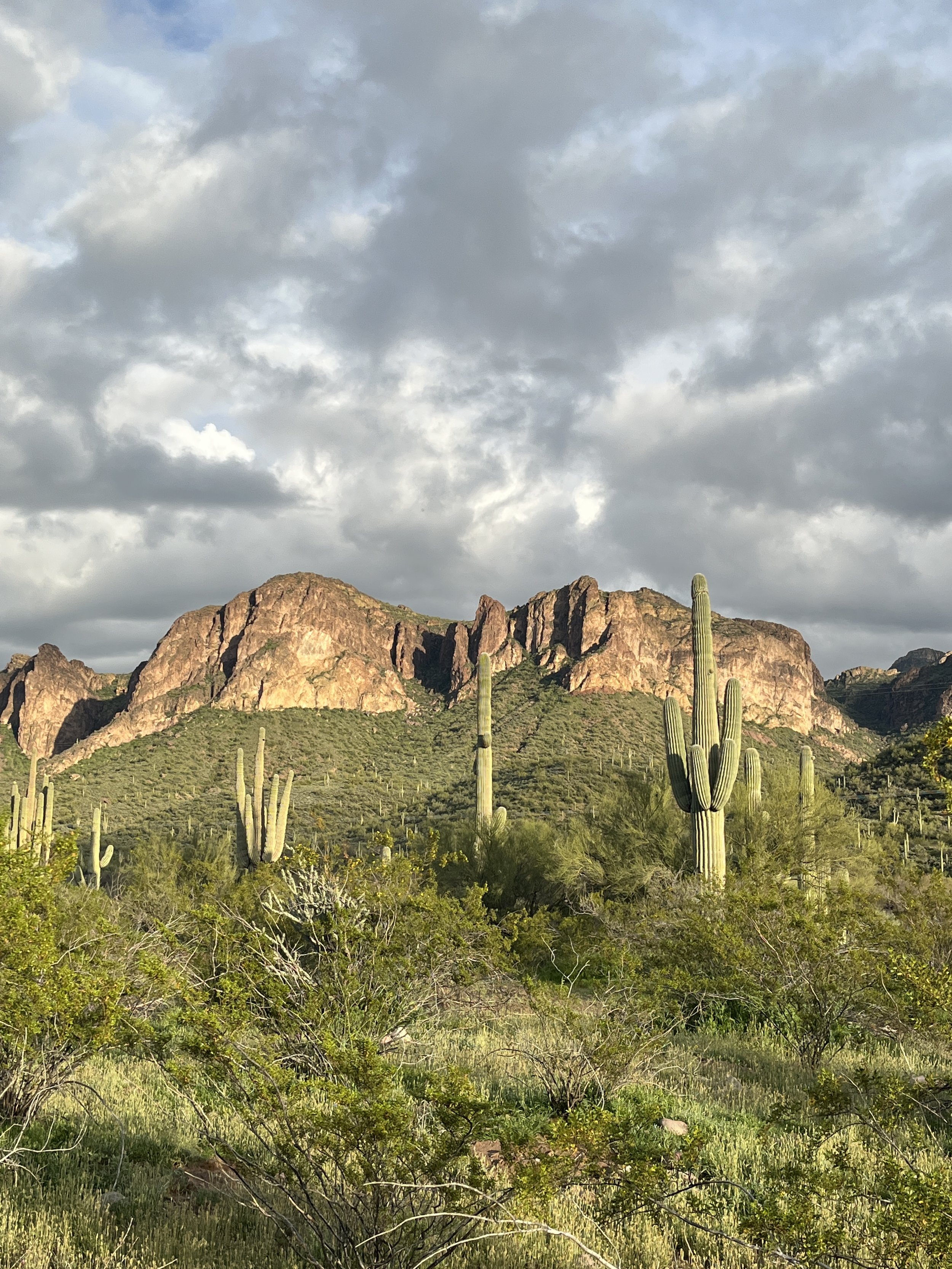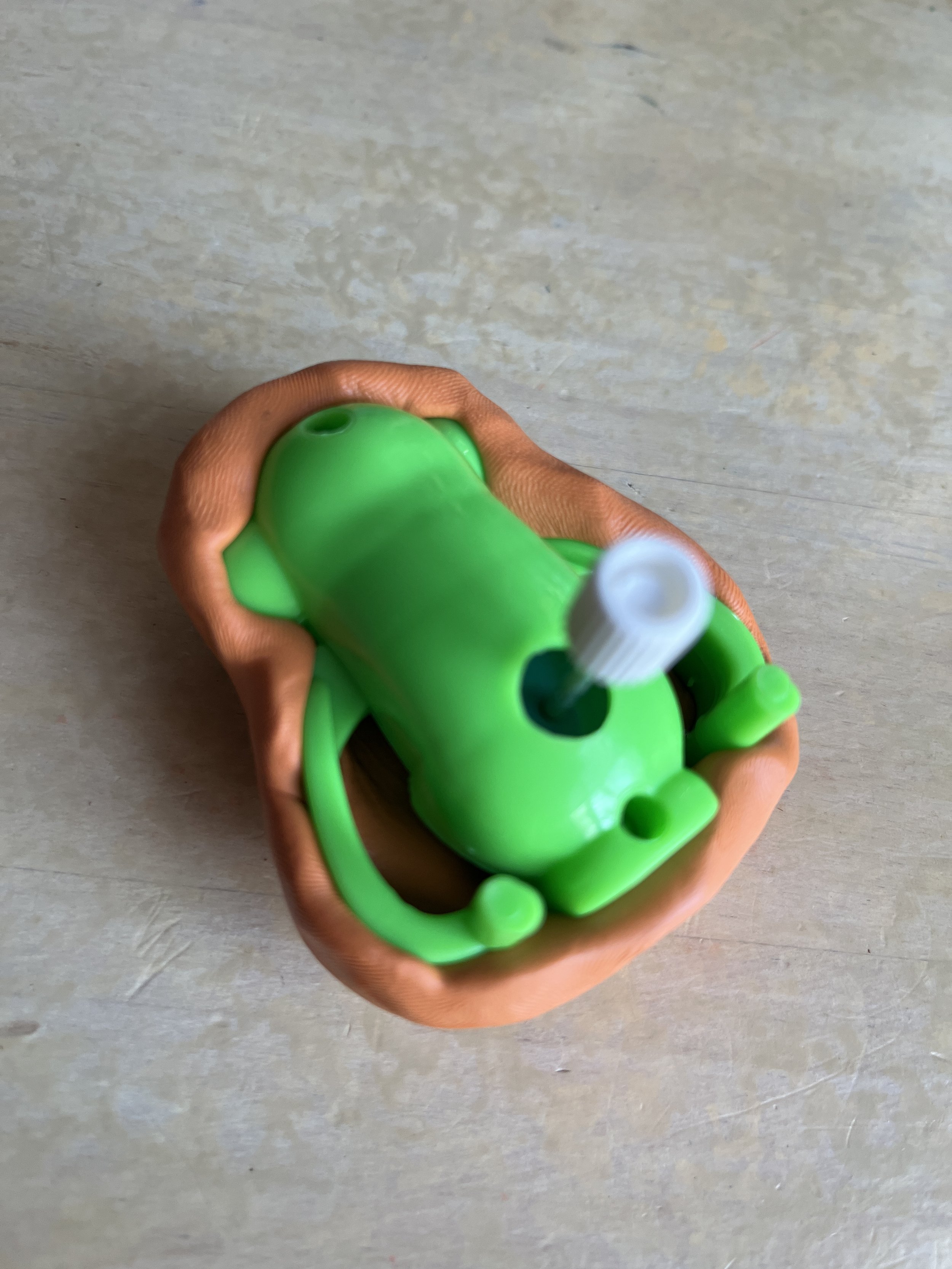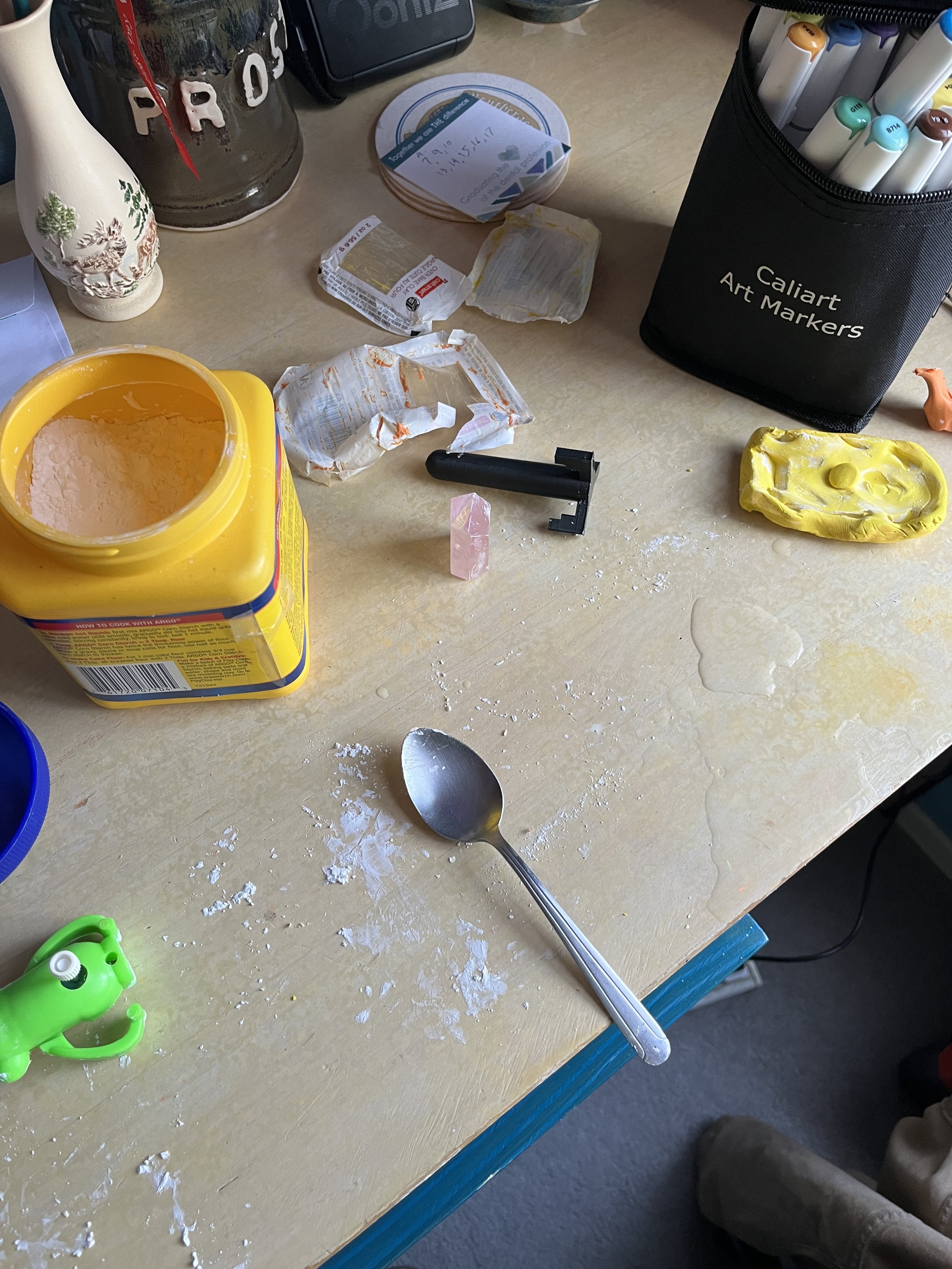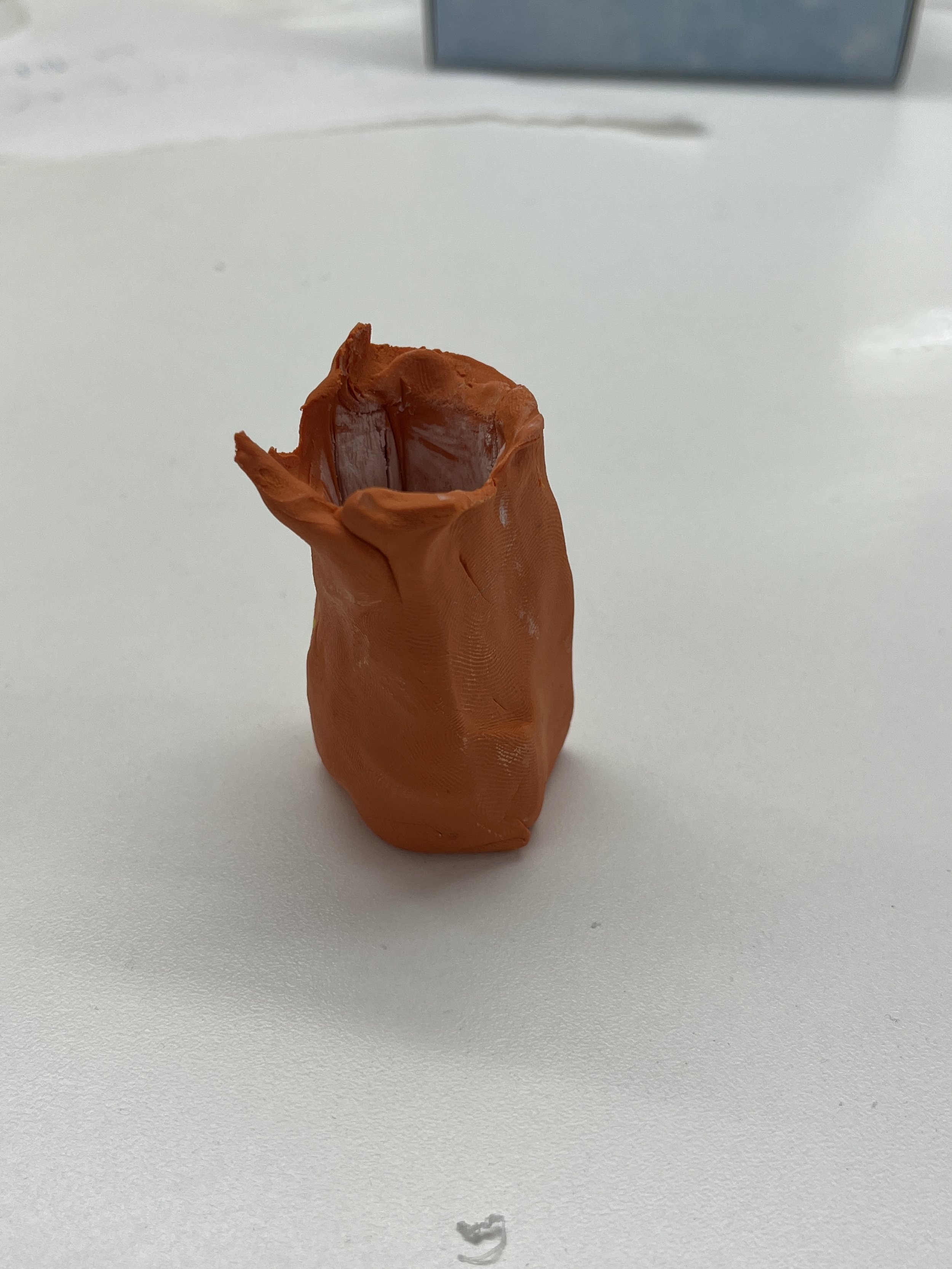Ok, I am so behind in this class!! Nothing like using spring break to catch up, get ready for a bunch of soft robotics blog posts all in a row!
Bio-inspiration
I have been spending spring break at my parents house in Phoenix, AZ. Their house basically butts up to the Sonoran desert, so there’s ton of bio-inspiration to be found!
When we first moved here almost 20 years ago, I really hated the desert, I missed the trees and grass I grew up knowing. But with time I’ve grown to appreciate the desert, its weird, alien plants, and really marvel at how anything can grow in this climate.
I find the capabilities of cacti to store water inside themselves so interesting but specifically I’m looking toward the cholla cactus for bio-inspiration. They are sometimes called teddy bear cholla because of their cute, cuddly appearance and their white/yellow spikes look kind of like fuzzy fur. They’re also referred to as jumping cactus as well because the top lobes easily detach from the plant when something gets too close and gets caught on the plant’s fine spikes. It’s so clingy it gives the appearance of jumping.
It’s kind of interesting to think of this feature of detachability in technology. Like could it be beneficial in a particular system to have defined segments of a material that could easily detach from the whole? I’m not really sure what a specific application could be.
A lot of desert plants also sport spikes to protect themselves from hungry animals. Could technology benefit from a built-in defense mechanism like cacti have with their spikey thorns?
I <3 Saguaro
Cholla in the Sonoran desert
Original Mold Design
Casting this toy monkey didn’t really go as I had planned. I wanted to cast two halves of the front side of the monkey and then attach them together to get a hollow thing. Possibly also use the insert piece from the last assignment to make a hollow and/or inflatable silicone monkey. I had some issues working with the craft clay. First, I had a hard time de-molding the monkey and I would distort and bend the clay trying to remove it. Online I found that cornstarch could be used as a release agent for polymer clay and that seemed to help release the plastic better so that the clay could keep its shape but then I had a hard time attaching the two halves without the pieces collapsing in on themselves.
I scrapped the monkey and tried making a mold out of this crystal I found in my bed side table. This was easier to work with because I could just massage the whole piece of clay around the whole object. However, working with the cornstarch made it a bit trickier because it stops the clay from sticking to an object so it was hard to make a close fitting mold. I found that the clay slid around a lot.
Silicone Casting
Finished? product?
This was hard! I’m not good at making molds … yet! I somehow got it in my head that the only other way I could make a mold was to 3D print something, which I’m a little scared of. But Kari showed us so many other examples of molds that didn’t require any 3D printed components, so I want to revisit this assignment sometime and try to design and build another mold. Also! I want to not be scared of the 3D printer! I hope to learn to model and print sometime too.

